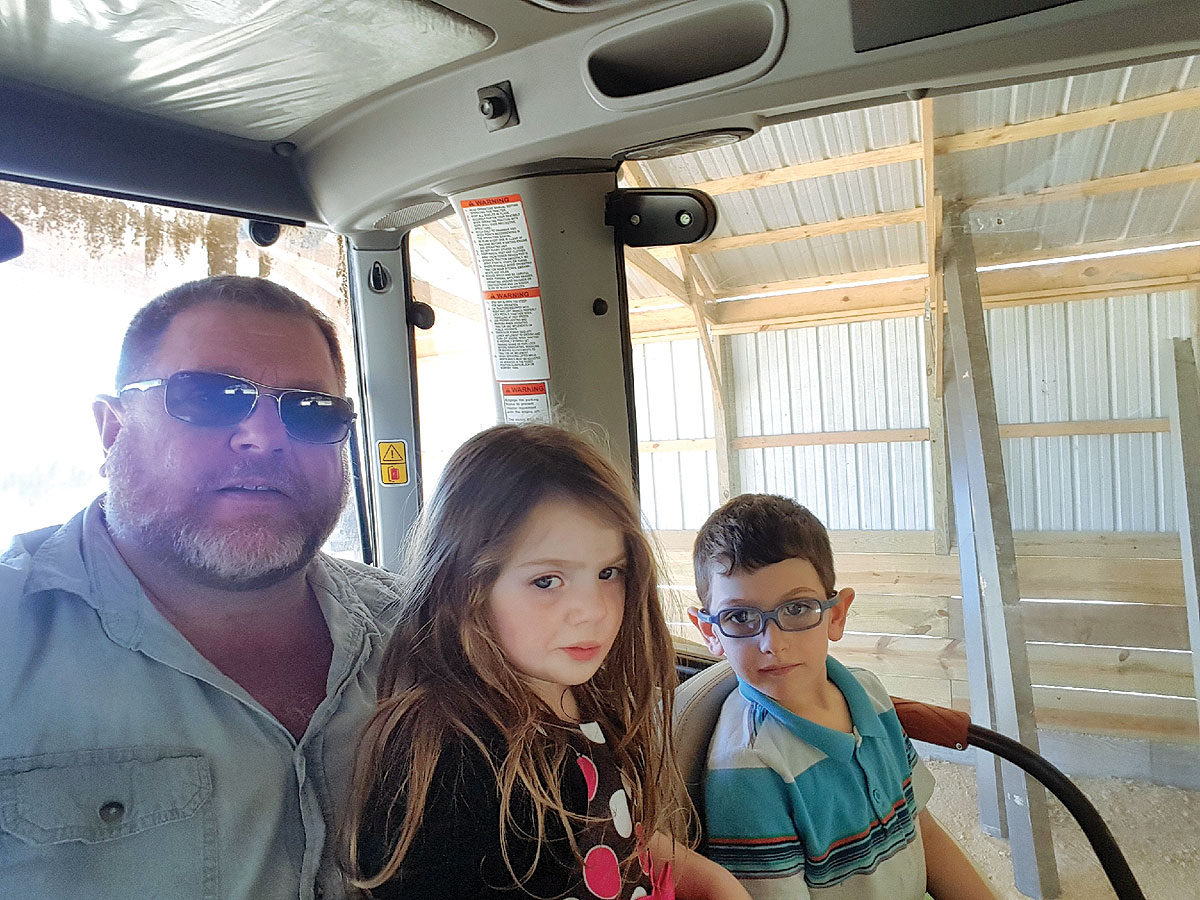From their home on the Bar of Ranch, to Buffalo Rock, a familiar landmark, the rolling pastureland owned by Dan and Peggy Eoff covers 600 acres. Two miles from Clinton, Ark., the ranch sits in a valley below Culpepper Mountain and is traversed by three miles of the South Fork of the Little Red River.
“I’ve worked cattle since I was seventeen,” Dan said. “All I ever wanted to be was a cowboy, but not only a horse man. You call yourself a cowboy, it’s not just a cow man or a horse man, there’s a lot to it. I wanted to raise and have horses, and cattle, do a little rodeo, be a performer, an all-around cowboy. Now we have the chuck wagon races, where we put on western performances.”
Since 1985, in addition to raising beef cattle and some horses, they have the National Championship Chuckwagon Races every year on Labor Day weekend. During those years the event has grown from a few hundred people, mostly friends, to a crowd of 20,000 in 2007. Participants come from a dozen other states to join the fun.
GOOD MANAGEMENT PRACTICES
In their day-to-day operations, Dan and Peggy work in cooperation with local, federal and non-profit conservation agencies. In 2005 they were recognized for having earned the Conservation Stewardship Achievement Award.
Dan cited his primary reason for participating in the program proposed to him by the U.S. Fish and Wildlife Service and the Arkansas Game and Fish Commission.
“We try to be good stewards to the land,” he said, “because we make our living off the land and the river. Our cattle drink there, also the wildlife in this area. No rancher wants a wash, or muddy gully near the river’s edge, on his place.”
To protect the quality of the water, Dan works on stabilizing the stream beds, protecting vegetation and directing cattle to designated watering areas. This decreases sediment and nutrient run-off. He has stabilized eroding stream banks, fenced the streamside buffer along one mile of the South Fork to direct cattle across to the river at two low water fords.
Cattle graze, he doesn’t feed hay, or cut hay from his pasture, maintaining better nutrient balances in the grass. Three hundred and fifty head are on winter wheat and rye. By the end of February he expects to have near 500 head. His perimeter fences are sufficiently strong, high and tight to contain his animals, with electric fences for pasture management. Feeding troughs are stationed in various locations for grain with minerals. Work on the ranch is done on horseback. At the present time he has 12 ranch horses.
FINISHING OUT YEARLINGS
He doesn’t keep and breed mama cows or feed out calves. He produces beef for the American consumer; keeps the consumer in mind in his methods of operation. Factors he considers that affect forage production in his pastures are season, rainfall, soil conditions and fertility, plant varieties and grazing management. Beef cannot be raised in a barn, they require room to crop, he said. He buys yearlings at 200-600 pounds, finishing them out, then when they weigh 650-700 pounds he ships and sells them to Heritage Feeders in Wheeler, Texas. Three pens hold incoming cattle where he keeps them up for three weeks and feeds them, observing if any need doctoring. His yearlings carry the Bar of brand.
“The modern way is ear tags,” he said, “but, when you’ve got a brand on them it’s permanent. You’ve got your cattle in a feed lot, there’s thirty thousand other head there, I’ve got my Bar of on their hide there’s no doubt which ones are mine.”
Growth and carcass characteristics are important to him, not particularly the breed, for cattle that works best in terms of economics important to his bottom line, to get value for his money. “The blacks are pretty good, and mixed-blacks, yellow Charolias are the best in our country.”
He empties the pastures during the wagon races. All the gates are open, people are camped on the ranch, coming and going on horseback. “We get the cattle up the first week of August, load and send them to the pen. You take 5,000 horses and mules, they ride everywhere.”
Compared to the satisfaction he gets from ranching, benefits far outweigh the work he puts in.
“We’re going to take care of our home and land first, the Chuckwagon Races come second,” Dan said. Dan also owns Bar of Feed & Ranch Supply, a feed store he started in 1989, in Clinton, Ark., that now supplies the surrounding region with livestock feed and supplies. “We’ve put in a lot of hard work through the years. We were going to have a pretty ranch, whether the races ever made any money or not. We’re just caretakers of the land while we’re here. And when we leave it, we want to leave the place in better shape than it was when we started.”






